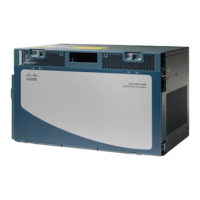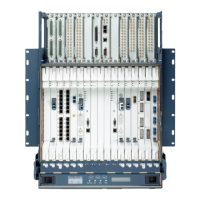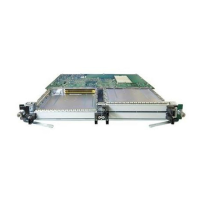Figures
xxvii
Cisco ONS 15454 Reference Manual, R7.0.1
OL-9217-01
Figure 11-9 Secondary Sources and Destinations 27
Figure 11-10 Alternate Paths for Virtual Path Protection Segments 29
Figure 11-11 Mixing 1+1 or BLSR Protected Links With a Path Protection 29
Figure 11-12 Ethernet Shared Packet Ring Routing 30
Figure 11-13 Ethernet and Path Protection 30
Figure 11-14 VCAT Common Fiber Routing 33
Figure 11-15 VCAT Split Fiber Routing 34
Figure 11-16 Rolls Window 37
Figure 11-17 Single Source Roll 39
Figure 11-18 Single Destination Roll 40
Figure 11-19 Single Roll from One Circuit to Another Circuit (Destination Changes) 40
Figure 11-20 Single Roll from One Circuit to Another Circuit (Source Changes) 40
Figure 11-21 Dual Roll to Reroute a Link 41
Figure 11-22 Dual Roll to Reroute to a Different Node 41
Figure 12-1 Four-Node, Two-Fiber BLSR 4
Figure 12-2 Four-Node, Two-Fiber BLSR Traffic Pattern Sample 5
Figure 12-3 Four-Node, Two-Fiber BLSR Traffic Pattern Following Line Break 6
Figure 12-4 Four-Node, Four-Fiber BLSR 7
Figure 12-5 Four-Fiber BLSR Span Switch 8
Figure 12-6 Four-Fiber BLSR Ring Switch 9
Figure 12-7 BLSR Bandwidth Reuse 10
Figure 12-8 Five-Node Two-Fiber BLSR 11
Figure 12-9 Shelf Assembly Layout for Node 0 in Figure 12-8 12
Figure 12-10 Shelf Assembly Layout for Nodes 1 to 4 in Figure 12-8 12
Figure 12-11 Connecting Fiber to a Four-Node, Two-Fiber BLSR 13
Figure 12-12 Connecting Fiber to a Four-Node, Four-Fiber BLSR 14
Figure 12-13 Linear (Point-to-Point) ADM Configuration 15
Figure 12-14 Path-Protected Mesh Network 16
Figure 12-15 PPMN Virtual Ring 17
Figure 12-16 Four-Shelf Node Configuration 18
Figure 12-17 Unprotected Point-to-Point ADM to Path Protection Conversion 22
Figure 13-1 IP Scenario 1: CTC and ONS 15454s on Same Subnet 3
Figure 13-2 IP Scenario 2: CTC and ONS 15454 Nodes Connected to a Router 4
Figure 13-3 IP Scenario 3: Using Proxy ARP 5
Figure 13-4 IP Scenario 3: Using Proxy ARP with Static Routing 6

